Sustainable Solar power in Sydney, home-generated electricity and green-housing developments go under the microscope this week as we explore the science of sustainable living. Meanwhile Dave goes for gold in water recycling by purifying and drinking water from urine, and we also find out how vitamin supplements can kill, discover an atom-thin transistor and hear how testosterone provoke boom and bust on the stock market. So join us as we become eco-estate agents and go through the keyholes of the Green Houses of Tomorrow!
In this episode
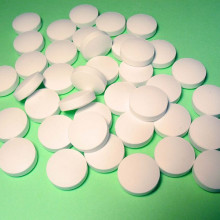
Vitamin death-link hard pill to swallow
Vitamin supplements might make you die sooner, say researchers.
Goran Bjelakovic and his colleagues, from the University of Copenhagen, looked at the results from 230,000 people who had taken part in 67 previously published placebo-controlled trials of anti-oxidant vitamins and their effects on health and disease.
 Combining the data together in this way can make a study much more powerful because bias and error can be reduced, and subtle, possibly previously-invisible trends are easier to spot.
Combining the data together in this way can make a study much more powerful because bias and error can be reduced, and subtle, possibly previously-invisible trends are easier to spot.
What emerged from this analysis, which included both healthy volunteers and patients with a range of diseases, was that taking anti-oxidants such as vitamin A or vitamin E are not linked to a lower death rate. In fact, when the researchers focused on the results of the 46 trials with the least risk of bias, a worrying statistic emerged. There was a 16% higher death rate amongst the users of vitamin A, patients given beta-carotene had a roughly 7% higher mortality rate, and those on vitamin E had a 4% rise in mortality. Vitamin C and selenium didn't seem to increase nor decrease mortality rates, but the team stress that more data is needed to form firm conclusions about these agents.
The use of vitamin supplements, and anti-oxidants in particular, is based on sound science, since researchers think that most of the effects of ageing and diseases linked to it like heart disease are caused by damage done to cells by reactive chemicals called free radicals. Antioxidants are thought shield cells from the damaging effects of free radicals, and therefore taking them as supplements might help to fend off disease and the effects of the ageing process.
Whilst that may be true, what this study shows is that obtaining anti-oxidants from a packet is not beneficial to your health and may even paradoxically increase mortality. Instead the only proven way to cut cancer and heart disease deaths is to eat five or more portions of fruit and veg daily, which has consistently emerged in trials as the best predictor of living to a ripe old age.
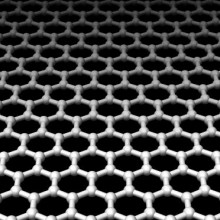
Atom-Thick Transistors
Scientists have made the world's thinnest ever transistors - the devices that switch current on and off in all electronic equipment. At their very smallest, the new transistors are just one atom thick and ten atoms wide. They're made of a material called graphene: carbon atoms joined together in a flat sheet.
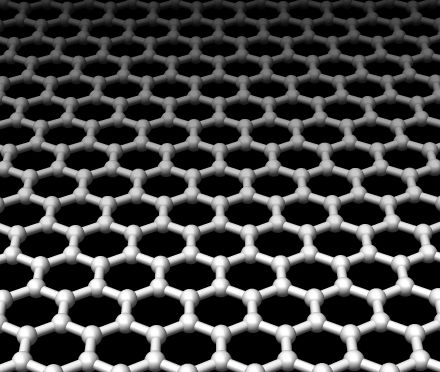 The tiny transistors may herald a new breed of computer chips smaller and faster than our current ones based on silicon. The number of silicon transistors crammed onto a chip has so far doubled roughly every two years, as Intel co-founder Gordon Moore predicted in his 'law'. But there are limits to the capacity of silicon-based electronics, because current leaks out when components get very small - and the silicon material isn't stable enough to hold together when it's cut down to 10 nanometres.
The tiny transistors may herald a new breed of computer chips smaller and faster than our current ones based on silicon. The number of silicon transistors crammed onto a chip has so far doubled roughly every two years, as Intel co-founder Gordon Moore predicted in his 'law'. But there are limits to the capacity of silicon-based electronics, because current leaks out when components get very small - and the silicon material isn't stable enough to hold together when it's cut down to 10 nanometres.
Andre Geim at Manchester University thinks his nanometre-sized transistors could go beyond these limits. Unlike silicon, his team have found, graphene is stable and conducts electricity when cut into strips of only a few nanometres wide. Strong carbon-carbon bonds hold the honeycomb structure together even at room temperature.
Graphene conducts electricity so well that earlier transistors made of the stuff were too 'leaky': it was very difficult to turn the current off. But the Manchester team have controlled current flow by cutting ribbons of graphene of varying width, which changes the electronic properties of the material. The latest transistors are their smallest yet.
The transistors were etched out of bigger pieces of material - but this isn't a scalable approach quite yet: the team had to pick the right size pieces after using an imprecise etching tool.
"It is too early to promise graphene supercomputers," says Geim. "Unfortunately, no existing technology allows the cutting materials with true nanometre precision. But this is exactly the same challenge that all post-silicon electronics has to face. At least we now have a material that can meet such a challenge."
Testosterone beefs up market bubbles
Researchers at the University of Cambridge have discovered that the performance of financial traders is linked to their hormones.
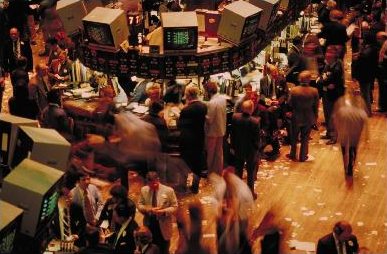 Joe Herbert and John Coates followed 17 city traders in London over an 8 day period, logging their daily profits and losses, and comparing them with the traders' testosterone levels, which were measured using saliva samples collected at 11am and 4 pm each day.
Joe Herbert and John Coates followed 17 city traders in London over an 8 day period, logging their daily profits and losses, and comparing them with the traders' testosterone levels, which were measured using saliva samples collected at 11am and 4 pm each day.
The results showed that on days their 4pm results showed an above-average return, traders' morning testosterone levels were 25% higher than on days when they made no return, or lost money. The researchers had also predicted that on loss-making days the traders would show higher levels of the body's main stress hormone, cortisol, but the saliva samples showed no such relationship. Instead there was a strong correlation between cortisol and the degree of unpredictablility or volatility seen in the market. The harder the market was to read, the higher a trader's cortisol level.
These findings, say the researchers, could explain the basis of the boom and bust nature of financial markets. Testosterone levels rise when a runner comes first in a race, boosting confidence, promoting a willingness to gamble and increasing impulsivity. Testosterone also provokes the release of the brain's pleasure chemical dopamine, which might explain why traders also describe getting a buzz from their job. Cortisol, on the other hand, when present in large amounts for long periods of time, is linked to sensations of anxiety and feeling threatened and therefore promotes risk-avoidance behaviour.
So Putting these two findings together shows how market bubbles, like the dot-bomb boom, can occur, and why crashes can become entrenched, as risk-averse traders desert the financial dance floor.
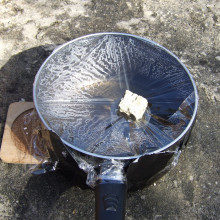
How you could drink your own urine safely?
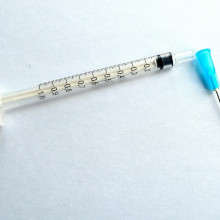
Why do doctors remove air from syringes?
The answer is this is good practice because if you're putting injections into say, a vein and you were to inject a bit of air you'd get what is known as an air embolus. The air bubble would float along the vein back to the heart; it would go through the right side of your heart and into your lungs and it would lodge in a blood vessel, which is a bit smaller than it is. The result is that blood would then be stuck behind this bubble of air. You'd have to wait for the bubble to slowly be absorbed back into the blood stream. Probably pretty trivial if you just have one-off injections but if you have a lot of injections this could actually compromise the circulation through the blood. The other point is if you're having an injection into a muscle it's pretty painful and the more volume you inject the more painful it is. If you inject a volume of air as well as injection material you're just going to make the experience even more unpleasant so we try and avoid that where possible.
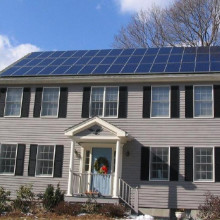
17:26 - Sustainable Solar Solutions?
Sustainable Solar Solutions?
with Dr Karl Kruszelnicki
Richard - This week on the show we're looking into ways to live sustainably. We've already heard how Ben and Dave are using sunlight to get drinking water from waste, but what about using the sun to generate electricity? Solar panels seem to be turning up on rooftops all over the place, but are they really worth using? You may be generating electricity for free - but how long does it take to pay back the costs of buying them in the first place?
And as with all technology, you need to use energy to make it in the first place, so do they cost the environment more than they give back?
Chris - To find out, earlier this week I spoke to Australia's Dr Karl Kruszelnicki who recently turned his home in Sydney into the solar equivalent of a power station.
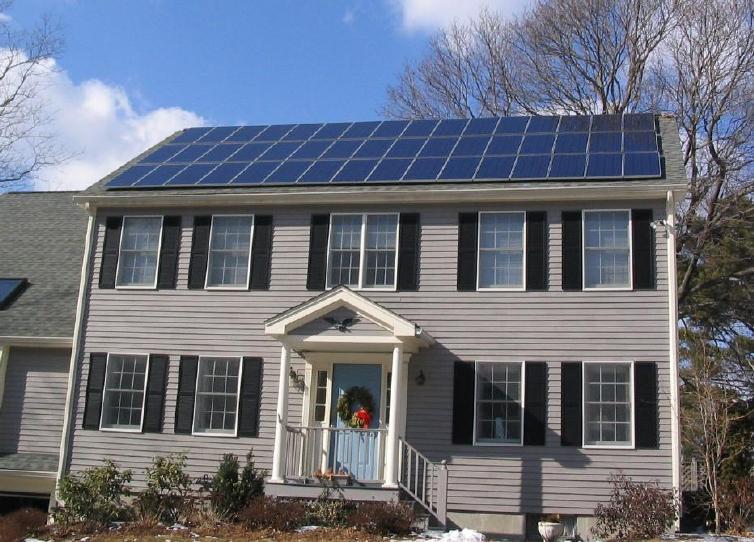 Karl - I've installed on my roof one of the ten biggest domestic (that is, on a private house) solar arrays in Australia. There's about 4.5kW and since September I have generated about 3000 kilowatt hours; I have used 1800 kilowatt hours and so in fact now I am a primary producer of electricity. I supply electricity to the grid. Shove it in the daytime, suck it back at night.
Karl - I've installed on my roof one of the ten biggest domestic (that is, on a private house) solar arrays in Australia. There's about 4.5kW and since September I have generated about 3000 kilowatt hours; I have used 1800 kilowatt hours and so in fact now I am a primary producer of electricity. I supply electricity to the grid. Shove it in the daytime, suck it back at night.
Chris - How did you go about setting it up and why?
Karl - Why was as an example to show that it could be done and that it should be done. How is very straightforward, you find the appropriate people and give them a big bag of money. You just open your wallet and repeat, "help yourself, help yourself, help yourself!" I've got 27 cells on the roof, 165 Watts. They cost $1800 each. Then there's the inverter, that's $7000; permission to the council for $2000. I had to put in the same development application as if I was putting in a ten-storey block of flats - and labour $2000. Basically, an average person's yearly salary is what it cost.
Chris - How long do you think it'll take you to pay that back in terms of how much you're getting in terms of the electricity you're selling back to the grid?
Karl - At the moment probably around 250 years.
Chris - Seriously?
Karl - In most of Australia, you buy it at a certain cost and sell it back at the same cost ,even though you are taking a load of the grid. In Germany they recognise this and they pay you seven times as much as you pay. If you buy it at x you can sell it at 7x. Then the payback time is a lot shorter. The payback time in energy is about 18-14 months depending on what part of the world you are in, what cloud cover you have, etcetera. Where I am, in sunny Sydney, the payback time is 18 months. The cells have a guarantee of 25 years but they're confidently expected to last for 40 years.
Chris - That's all very well if you live in Sydney because having lived there I know there's lots of sun there. How would the set-up here compare because most days it's cloudy. In summer there's a bit of sun. How much sun do you need to get in order to make this system work?
Karl - With your energy costs the way they are in England you'd need probably a 7kW array maximum. You would be running it at lower efficiency because you would have less sunlight. At the moment solar cells are expensive because the price of silicon has gone up by a factor of 8 over the past few years. However, when I was an engineer one thing I learnt was do not reinvent the wheel. Nature, via trees, is doing a wonderful job of turning sunlight into electricity. Once we humans learn to copy that better I'm sure that we'll get cheaper solar cells. Part of the energy equation will be solved by having every roof in the world stuffed full of solar electricity and solar hot water. It doesn't matter if you're getting lots of sunlight or not, at least you're doing something to get energy for free with regard to carbon dioxide being the cost.
Chris - How much carbon dioxide have you prevented from going into the atmosphere because you've set this up?
Karl - 4.9 tonnes, I read proudly tonight before I came into the studio.
Chris - Have you got some kind of gauge that measures how many carbon dioxide equivalents you have sold back to the grid?
Karl - Yes. It tells me how many cycles the grid is producing, what voltage they're producing. So depending on whether it's peak hour the cycles go up or down, the volts go up or down. The big train full of 2000 people in the subway starts to pull out and you can see the voltage suddenly drop: the big load comes on. This tells me my peak output. In high summer when I have the best orientation with regard to the sun I can typically produce 32 kilowatt hours a day when I am using about 18-15 [kWh]. Now as we're headed past the equinox on our side of the equator I've been generating 24 [kWh] a day. I'm still ahead of my 18kWh and I've come across a family in Perth who run their house on 3kWh a day. Your fridge uses 1.5kWh so they must be extremely frugal and I'm very happy to learn from them how they achieve this magnificent economy of electricity.
Chris - But there's more to running your house than just the electricity? Presumably you must be heating your water so is that included in your equation?
Karl - Water we do via gas because to generate electricity in some distant place and then send the electricity across you get big losses. It turns out the losses are less if you pipe gas and then you burn it in an instantaneous hot water heater rather than a storage hot water heater. We're busy planning how to dig a hole in the front yard and put in a 50 tonne underground water tank which should be able to float us through the year so we don't have suck any water from the grid. We will still have to suck gas from the gas supplier to turn that cold water into hot water. The next stage of the equation would be to put hot water on the roof as well.
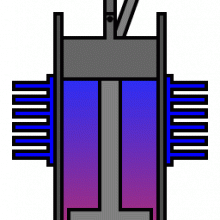
23:59 - Generating Heat and Power at Home
Generating Heat and Power at Home
with Elaine Ball, Baxi group
Chris - So how else can we generate electricity at home? Well Elaine Ball is from Baxi Group - and they've developed a household boiler system called the Ecogen which, as well as heating the house and water, also generates electricity. And here's the really good news - the electricity effectively comes for free...
Hello Elaine, thank you for joining us on the Naked Scientists. It's good to have you with us. How does it work?
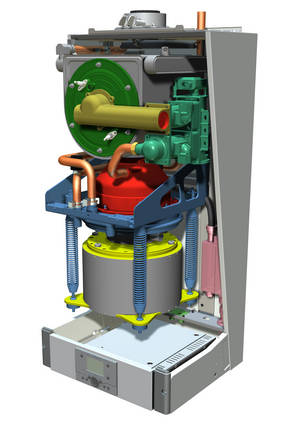 Elaine - The Ecogen, as you said is a gas appliance that, when it burns and generates heat, we also get electricity as well. The basis of the product is a Sterling engine which works similar to an internal combustion engine except that the unit is sealed and has helium in it. We have the gas burner external to the unit. What we do is we burn the gas at the top of the engine and we cool the gas at the bottom of the engine. That with the displacer moves the hot and cold gas around and drives a piston.
Elaine - The Ecogen, as you said is a gas appliance that, when it burns and generates heat, we also get electricity as well. The basis of the product is a Sterling engine which works similar to an internal combustion engine except that the unit is sealed and has helium in it. We have the gas burner external to the unit. What we do is we burn the gas at the top of the engine and we cool the gas at the bottom of the engine. That with the displacer moves the hot and cold gas around and drives a piston.
Chris - Right. The piston is connected to some kind of generating system?
Elaine - The piston is actually free and it's got gas bearings round it which helps with minimising the losses. Around the piston when it moves we have magnets and wire coils that produce electricity directly at 50Hz which means it can be fed directly into the home or exported back to the grid.
Chris - This sounds like a bit of a no-brainer. It sounds fantastic. Why has no one done this before?
Elaine - In the past there were a lot of challenges with actually getting the technology to work in an affordable and reliable way. Also an application that was good for the technology because when you're trying to use it to drive a mechanical energy there are a lot of heat losses. Because we're using it for a heating appliance we're actually good to get those heat losses because we actually then use that heat to heat the home, the radiators and the hot water cylinder, for example.
Chris - How much heat could it put into the average home? Is it more an electricity generator? More a boiler or is it really genuinely fulfilling both roles?
Elaine - The great thing about the technology is that it's generating electricity whilst producing heat. We call it a heat-led technology. Generally when you look at people's electricity demand it's generally when you want heat at the same time. It's great, you have your demand for heat in your dwelling and then you produce electricity at the same time. We'll produce one kW of electricity and the Sterling engine itself produces about 6kW of thermal energy. Then we have a second heater to give up to another 18kW which is great because there's lots of different house types across the country, different heat demands. Because it all modulates down it will basically suit the heat demand to the house. It meets a lot of applications.
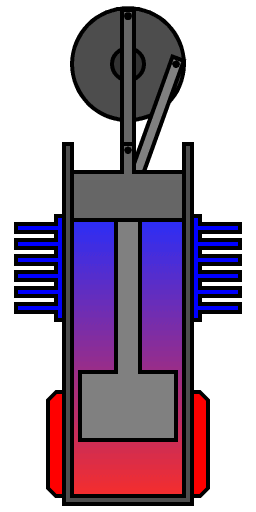 Chris - You've installed this for a number of people who were in your test run. How are they finding it?
Chris - You've installed this for a number of people who were in your test run. How are they finding it?
Elaine - They're really pleased with the unit because they've already seen fuel savings, cuts in their energy bill and we've also got a number of utilities on board. When they're exporting energy back to the grid they're also getting paid for that energy as well.
Chris - What sort of fuel costs and electricity bill changes are the people who've tested this seeing? What are they getting out of it?
Elaine - Well, we've seen about a 40% reduction in fuel bills. If we take one fuel trial in Preston in four months the boiler generated nearly 800kwh for a demand that was needed in the home for about 1200kwh. Because Terry was getting a net benefit from selling back he was basically getting 2/3 of his electricity for free.
Chris - But have we not had a problem where some of the utility companies don't play ball? Dr Karl in Australia was saying you only get paid 1:1 for the amount of electricity you sell back. In Germany you get a better deal. In some cases in the UK the companies won't buy the electricity off of you. You end up giving it to them for free.
Elaine - No and that's where there's a lot of consultation going on at the moment because we're trying to get a standard and a sort of fair quota across all the utilities. At the moment it really is dependent on which utility you're with and what system they're going to use. There's a lot of debate at the moment about feed and tariffs and whether we should adopt that in the UK or provide capital investment upfront through the government's carbon emission reduction programmes.
Richard - What kind of benefit are you going to get in terms of reducing carbon dioxide emissions?
Elaine - When we look at typical average annual usage of a boiler we get between 2.5 to 3 thousand run hours a year. If we look at an existing condensing gas boiler today and compare this product then if we get 3000 run hours then the homeowners going to save probably 2-300GBP per year versus an existing boiler. In terms of carbon that's equivalent to about a tonne of carbon dioxide in a year for each appliance. If you think about the twenty two million homes in the UK and the number of gas boilers that are sold then it doesn't take a lot of maths to think a lot of boilers is a lot of carbon dioxide saved.
Chris - Running an engine in your garage sounds noisy. Are people complaining these things are noisy Elaine?
Elaine - Actually as well as having the very first units in garages we installed out second field trial just before Christmas and we've got a number of units in kitchens. Where the Sterling Engine benefits over the internal combustion engine is that you've got none of these internal explosions and it's a very quiet operation so the noise levels of the products we've installed are typical to a normal gas boiler. We've got, as I say, units in kitchens and no complaints so far.
Chris - Does it take some special infrastructure to plumb it in and lastly, what's the cost to install this in someone's house?
Elaine - Because it's based very much on traditional gas technology in temrms of the gas and heating side it's the same installation that a normal gas engineer plumber could do today. The additional complication is the requirement of a new meter to be able to export to the grid and therefore getting involved with your utility to make that meter connection. Typically, it shouldn't be much more of an onerous task than a gas boiler today.
Richard - When can I get one?
Elaine - Well, we're looking to bring them to market at the end of this year/beginning of next year.
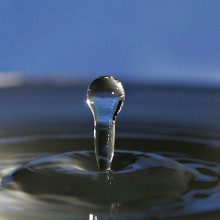
30:48 - The Science of Survival
The Science of Survival
with Melinda Campbell, Science Museum & Jacob Tompkins, Waterwise
Meera - This week I've come to the Science Museum in London to visit the new Science of Survival exhibition which opened last week. The exhibition covers important issues facing our future and our survival: looking into things like global resources, climate change and the options we have towards a sustainable future. As soon as you walk in you meet four characters: Buzz, Eco, Tech and Duck who all have very different views and opinions about how we can have a sustainable future. Throughout the exhibition each character provides their opinions to give you an idea of just how differently people can see these issues. The main content developer on this exhibition is Melinda Campbell. She's here with me now to tell me more about the future and our survival. Hello Melinda.
Melinda - Hi.
Meera - What's the point you're trying to get across?
Melinda - The first thing we do in the science of survival is we look at different areas that every human needs to survive. We look at drinking, eating, enjoying, getting from place-to-place in moving and building which is about regulating body temperature and protecting yourselves from the elements. The fun part about the science of survival is that each section allows kids and families to make their own decisions about what kind of future they want. On your survival card the decisions you make and the visual representations of what you created will be remembered for you. Then when you go to Futurecity at the end of your visit you'll be able to see the implications of your choices in your very own neighbourhood for 2050.
Meera - Another section here in the exhibition is all about drinking and our water supplies in the future. One of the consultants on this section was Jacob Tompkins from Waterwise. Hello Jacob.
Jacob - Hello.
Meera - What was involved with the exhibition here? What are the problems with our future water sources?
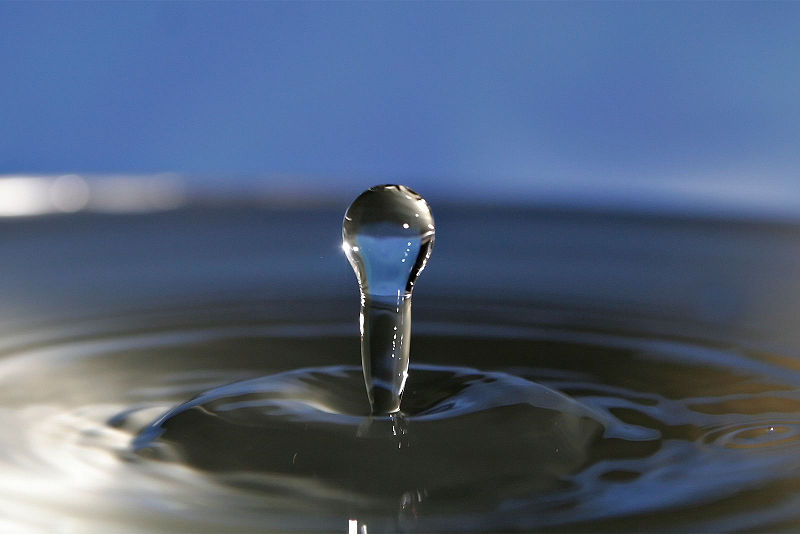 Jacob - At the moment we use about 150l per person every single day - a huge amount of water. What we're seeing is we're using more so that amount is rising every single day. We're taking more showers, we're doing more washing - things like this. At the same time we're living in the dryer parts of the country, we're living in smaller households and what climate change really means is more floods and more droughts. There's going to be less water, that's going to be more difficult to get hold of and also we're going to be using more.
Jacob - At the moment we use about 150l per person every single day - a huge amount of water. What we're seeing is we're using more so that amount is rising every single day. We're taking more showers, we're doing more washing - things like this. At the same time we're living in the dryer parts of the country, we're living in smaller households and what climate change really means is more floods and more droughts. There's going to be less water, that's going to be more difficult to get hold of and also we're going to be using more.
Meera - What can we do about this to ease the situation?
Jacob - Amazingly it's actually quite simple. As I say we use about 150l every day. About 50l of that is simply wasted. It sounds like a cliché but turning your tap off when you brush your teeth - if everyone did that it would provide enough water to supply the whole of Scotland. Knocking a minute off your shower, don't leave the tap running to get a drink of fresh water, fill a bottle and put it in the fridge. Simple things like this but don't cut back on cleaning or drinking obviously.
Meera - One of the ways you're getting the message across in the section is through a game. There's various things mentioned in that like fog farms so are those potential sources of water in the future?
Jacob - Probably not in the UK but it's already being used in the Ethiopian highlands and parts of South America. They've already put up meshes, large nets which actually catch dew from fog and mist and then can condense those. In the UK we're not that short of water but we do need to be looking at simple, low tech solutions like re-using sewage water. It doesn't sound very nice but what we could do is look at water from sewage treatment works, look at purifying that. You can do it through natural means, by reed beds and things like that and use that to re-augment our rivers or re-using it for supply.
Meera - So as well as games here there are cabinets showing examples of the solution. What kind of things have we got on display here?
Jacob - It's quite encouraging. There's a lot of low tech solutions on there. One of the most fun ones is something that's used quite widely in Africa, which are play pumps. They're basically like ordinary things that you'd find in a playground, seesaws and roundabouts and things. The kids, actually while they're playing, pump water. There's also some fairly simple water purification devices. The technical term is flocculate. What they effectively do is take the particles of dirt or salt in the water, settle the out so you've got fresh drinking water on top. As well as that there's one that's just come into the UK actually which is putting your basin on top of the toilet cistern.
Meera - I actually saw that. I thought it was quite a good idea.
Jacob - When you wash your hands about a third of the water we use gets flushed down the toilet. What it's doing is you wash your hands and that fills up your toilet cistern. This is grey water re-use we call this. Grey water and rain water are being used a lot. There are simple ways that water that is slightly dirty can potentially be re-used.
Meera - You say the average person uses 150l and that's on their own individual needs but obviously water is used on larger scales in consumer products and things, aren't they?
Jacob - yes, there's something we call embedded water which is basically the amount of water that goes into growing a carrot or making the tie I'm wearing or the car that people drive. If you factor that in we all use 3400l every single day! There is massive fluxes of water around the world. What we need to start thinking about is how much water has gone into the things we're using and where has it come from? The way that people start to think about carbon now we should also start thinking about water and asking questions, basically. Is it being grown efficiently, is water being wasted?
Meera - That was Jacob Tompkins from Waterwise, making sure we all turn our taps off. I've had some time to go on all the activities here so I've come to Futurecity with content developer, Melinda Campbell, who I spoke to earlier and I'm going to see what kind of world my decisions have resulted in.
Melinda - Do you want to scan in with your survival card?
Meera - Ok, I'm just going to scan in now.
Beep!
Meera - Ok, so it's welcomed me to my city in 2050.
Melinda - In this case you've designed your own vehicle. You've got something that travels on rails. You've also chosen biofuel to power it. What this computer's showing you is that you're actually going to need an entire farm to create the crops for the biofuel. This is a little bit of infrastructure you might not have thought about when you designed your vehicle. Because it travels o rails you're going to need these things in your community.
Meera - I guess the exhibition's getting everybody to think about their futures. What is the future of our survival?
Melinda - I think one of the key messages in the science of survival is that future is not set. We try to inspire kids that this is about their daily life. They can make positive choices for sustainable future, we all have apart to play in making an exciting one.
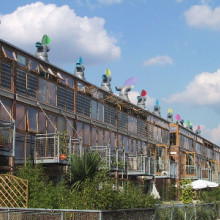
37:50 - Zero Energy Housing
Zero Energy Housing
with Asif Din, Zedfactory
Chris - We're talking now to Asif Din who joins us now from ZEDFactory. He's one of the architects that's involved in BedZED. That's the Beddington Zero Energy Development. This is a housing development that produces or aims to produce all of the energy that it consumes within its site boundaries. That's a pretty ambitious target, Asif.
Asif - Yes! Hello.
Chris - How do you plan to do that?
Asif - It was originally planned to have a combined heat and power plant on site which has a capability of producing all of its electricity and hot water on site over the course of a year. During the winter it might import a bit of energy but during the summer it'll be exporting.
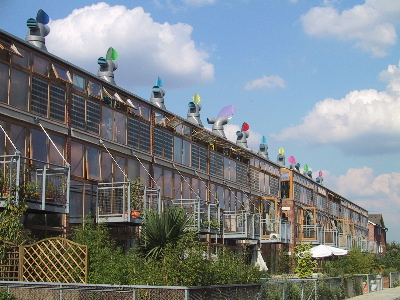 Chris - The houses do need heating but you're doing it much more efficiently because you've got your own local power station basically.
Chris - The houses do need heating but you're doing it much more efficiently because you've got your own local power station basically.
Asif - As a matter of fact BedZED has as much insulation so you do away with having your usual central heating system. It's got virtually zero-heating dwellings but on the hot water side, you still have to provide hot water.
Chris - Sure, because you can't do without a hot shower every day!
Asif - No!
Chris - Talk to us about how architecture is going in terms of producing houses which we view are sustainable dwellings. What are the housing priorities?
Asif - One of the big ones is, As Dr Karl was saying, actually producing enough enrgy from your rooftop to actually power your home. Beddington Zero Energy Development does that on a site-wide scale but the actual aim would be to do it on a single house or retrofit a house so you can produce all of the energy it needs from your house.
Chris - They're twp rather different targets though, aren't they? Retrofitting my manky old cottage so that it was as good and energy efficient as one of the houses you're designing and building now is a very different target, isn't it?
Asif - It is, very different. There are certain things that you can still do. You can still buy A rated appliances so when you've finished with your washing machine or fridge you can get a more efficient one. By reducing the amount of energy you might be able to put a couple of PV panels on the roof and power a few bits and pieces of your house.
Chris - What about in terms of the way houses are laid out? It's very much en vogue at the moment to have your own dwelling which is a detached cottage but that's got four walls which are exposed the elements therefore the heat loss must be big. Should we be going back to the Victorian era where everyone lived in terraces?
Asif - BedZED is actually arranged in terraces and yes, if you are living in an apartment building or something that's surrounded by quite a few on the sides then yes, you are going to consume a lot less energy than having an exposed cottage in the middle of nowhere being swept with wind.
Chris - What about government regulations? What's the government saying we should do when we build new houses and make sure they're energy efficient and don't relase excess carbon dioxide into the air?
Asif - The government has put together a code for sustainable homes which next year will become mandatory for housing associations. It will be what's called code level 4 which will slowly ramp up until, I think, it's 2018 when all of their homes should be zero energy or zero energy target.
Chris - Wow, when you say they're zero energy they literally are not net consumers of energy?
Asif - They're not net consumers of energy. They produce all of what they require from their own site boundaries.
Chris - But how? I know how much energy my house uses. How is that achievable?
Asif - It's actually starting from the very basics. It's about lifestyle, it's about using the right appliances, energy efficient appliances. It's also, as I said, putting enough insulation in the wall so you don't actually need a proper heating system.
Chris - If you put lots of insulation in the walls the walls are much thicker and developers don't like that because they can't get as many houses on the site.
Asif - Yes but they will save on not having to put in a central heating system so it's balancing one thing with another.
Chris - When you say a combined heat and power station, tell us a bit about how that would work and how it's laid out. Why won't there be pollution tipped onto the houses, having that in their back yard?
Asif - It's quite a clean-burn technology. The one at BedZED was a modified diesel engine, effectively that takes the gas off woodchip then puts it through a processor which then produces energy from a turbine. The turbine has a jacket of water around it and that produces its hot water. Rather than having huge cooling towers as you would do in a proper power station the heat is not dumped and it's actually used for a good purpose.
Chris - How many people can you have in one of these developments benefiting in this way? What happens when it goes wrong in the middle of winter? Everyone's cold?
Asif - You would always have a back up of some description.
Chris - Hot water bottle?
Asif - No, it wouldn't be that bad but you would have, say, an immersion heater on your cylinder like you would do even now. If it does break down at any point you would still get hot water.
Chris - How much do you think you can save people in terms of their household bills in the houses you're designing now?
Asif - BedZED's proving to be a 90% reduction on space heating, about a 50% reduction on water and about a 50% reduction on electricity.
Chris - Those are pretty impressive results.
Asif - They are.
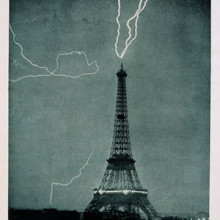
Lightning on TV?
John Hammond, Met Office:On average in the UK itself we have about 1 in 3,000,000 people that are struck by lightning so that's quite a high number. Most of those do survive but overall the people who have been struck have been doing anything from literally using electrical appliances. We've had accounts of people who've been ironing and they've been blown across the room because the lightning has come down that particular way. If you are concerned then I would certainly try and unplug an electrical appliance to try and break that link where the lightning therefore can't go and not make contact with the ground ultimately.Dr Bob Howlett, Reader in Electrical and Electronic Engineering, University of Brighton:Whether you plug your television in or not when there's lightning around - it's an interesting question. I think it's one of those questions where the answer really is, it doesn't make too much difference. It certainly doesn't make any difference as to whether you get struck by lightning or not because that is down to the distribution of charge in the clouds and the distribution of charge over the nearby buildings and would you believe, the shape of the building: whether there are sharp points on it and things like that. One little television aerial isn't going to make any difference that way. If you do get struck by lightning the current will come down the aerial cable and if your television's plugged in it may be a good thing because the television will melt down and absorb the energy. The bad thing is that the cathode ray tube may explode which is not very nice but the television would act like a nice little fuse and absorb some of the energy. If it's not plugged in the energy's going to go somewhere else. There will be a spark from the plug to the nearest earth point which might be a radiator or it might be you or your dog walking past or whatever but you don't know what. Even if nothing happens to the television aerial the wet walls will be quite good electrical conductors. You'll get quite large current coming down the walls on the outside of the building. Those changing currents will cause magnetic fields, which in turn will induce EMFs or voltages in what could be any electrical equipment in the house. I'm afraid the answer is there's probably not much you can do about it apart from lying back and watching the show.
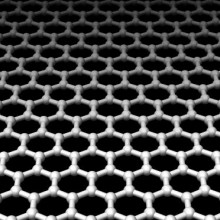
Are graphene-based transistors sensitive to lightning strikes?
[Mark is referring to graphene transistors - transistors only one atom thick!]
Richard: Yes, I'm fairly sure it would because with all these components you've got electrons running through them. That gives you electricity, that's the negative charge there. I think the lightning strike would disrupt them just as it would disrupt other electric components.
Chris: It might turn it into a sort of miniature barbecue because carbon burns beautifully in air so if you get enough current through it, it will get hot and presumably ignite?
Richard: Perhaps so...

Why do fizzy sweets make your mouth cold?
I don't think it's the same process as with menthol, because dextrose is another term for glucose - that's just sugar.
I think it's, in fact, a clever chemical trick going on to make his mouth feel cold when he sucks this sweet.
I think the reason is that to make the sweets fizzy, and have that effervescent effect, you mix them with sodium bicarbonate - which is an alkaline substance - with some citric acid.
They're both dry, but when they dissolve in your mouth, the water in your mouth makes most of these dry crystals become liquids and then they can react together and you get a neutralisation reaction, which has an endothermic effect. In other words it gets colder when you react an acid and an alkali together.
This makes your mouth feel colder. I think it's a chemical reaction, it's one of these unusual reactions but it makes things get colder.
- Previous Lightning on TV
- Next Gold: Chemistry in its element









Comments
Add a comment